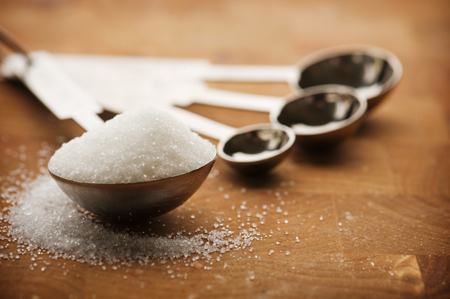Dry Weather in Brazil Boosts Sugar, Coffee Prices
Category: Sugar
 (Wall Street Journal) – Sugar and coffee prices rose to multi-month highs on Monday as a drought in Brazil fueled concerns about smaller crops from the world’s biggest exporter of these commodities.
(Wall Street Journal) – Sugar and coffee prices rose to multi-month highs on Monday as a drought in Brazil fueled concerns about smaller crops from the world’s biggest exporter of these commodities.
Producers and analysts have been cutting their production estimates as a hot and dry summer threatens some of Brazil’s crops. The adverse growing conditions could crimp world supplies, although there isn’t a danger of a shortage of any of the commodities.
“This is the biggest story in town,” said Sterling Smith, a futures specialist at Citigroup, referring to Brazil’s dry weather.
Sugar prices touched bull-market territory, defined as a 20% rise from a recent low. Coffee futures jumped 4%.
The moves highlight Brazil’s importance to global food supplies. Brazil provides one-fifth of the world’s sugar, a third of its coffee and about two-thirds of its orange juice. It vies with the U.S. to be the largest exporter of soybeans.
January and February have been the driest months in Brazil in 30 years, according to Somar Meteorologia, a São Paulo-based private weather service. The lack of rain is affecting the development of cane there, reducing the amount of sugar recoverable from the plant, according to Copersucar SA, Brazil’s biggest sugar-producing company.
Copersucar lowered its estimate for Brazil’s main growing region by 6% to 570 million tons of cane in the 2013-14 season, which starts in April.
Raw sugar for May delivery rose 3.6% to 17.68 cents a pound, one-hundredth of a cent from a bull market and the highest settlement since Nov. 18. Sugar for March delivery ended 4.1% higher at 17.41 cents a pound.
The drought is also hurting coffee trees. Macquarie Bank forecast Brazil’s crop at 53 million 60-kilogram bags of coffee, “against what could have been a 56-58 [million-]bag crop.”
Arabica coffee for May gained 4% to $1.7635 a pound, the highest settlement since Oct. 3, 2012.
The dry weather is also causing “a little nervousness” over Brazil’s cotton crop, Citigroup’s Mr. Smith said.
While Brazil is the world’s fifth-largest cotton producer, lower output could dent already tight Western Hemisphere supplies. The U.S., the world’s biggest cotton exporter, is expected to have harvested its smallest crop in four years, according to the U.S. Department of Agriculture. Brazilian growers will pick their cotton crop in mid-2014.
Cotton futures jumped to a more than six-month high, with delivery in May ending at 89.30 cents a pound, the highest since Aug. 19.
Monday was also first notice-day for the March-delivery cotton futures contract on the ICE Futures U.S. exchange, but there were no deliveries posted.
“Zero [deliveries] is sort of what set it off,” said Louis Rose, founder and owner of Risk Analytics LLC, a cotton-consulting firm based in Memphis, Tenn. “The market just takes that as things are tight.”
The USDA forecasts there will be 3 million bales of cotton left over in domestic warehouses at the end of the current season on July 31. That would be the smallest amount since the season that ended in 2011.
Orange-juice futures rose only slightly, as declining consumer demand for the juice in the U.S. continues to weigh on prices. May-delivery frozen orange-juice concentrate rose 0.1% to settle at $1.4685 a pound.
Cocoa for May delivery ended 0.3% higher at $2,958 a ton.




